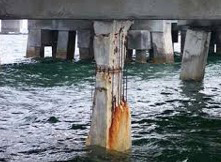 ESR8: Probabilistic modelling of bridge damage based on damage indicators
ESR8: Probabilistic modelling of bridge damage based on damage indicators
- Host: Phimeca Engineering
- Address: Centre d’Affaires du Zénith, 34 rue de Sarliève, F-63800 Cournon d’Auvergne, France.
- Main Supervisor: Dr. Thierry Yalamas
- Fellow: Barbara Heitner
While in the 90’s, Structural Health Monitoring (SHM) projects were concerned only with the construction phase, nowadays, the main purpose of monitoring the structural response is to confirm design assumptions in new structures, and the controlled lifetime extension of existing structures. SHM systems provide indirect indicators of damage in bridges – for example, a change in a mode of vibration may indicate damage.
There is an extensive literature in SHM, particularly in methods which use accelerometer signals as damage indicators, however, the uncertainty associated to these damage indicators is unknown and will be investigated by combining Phimeca’s advanced uncertainty models with University College Dublin’s expertise in bridge analysis. It is known that damage in bridges due to, for example, corrosion, is spatially correlated, i.e., if there is a high level of damage at a point, the probability of a high level of damage at an adjacent point is increased. This theory has been developed by O’Connor (Dublin) (who will advise in this project), Stewart and others.
Damage indicators provide information on the location of the damage but this relationship between indicator and location is uncertain. Nevertheless, the probability density function for damage indicator often contains implicit information on damage location.
You can follow blog and publications by ESR8 below.



